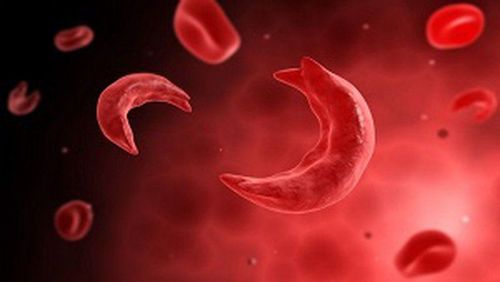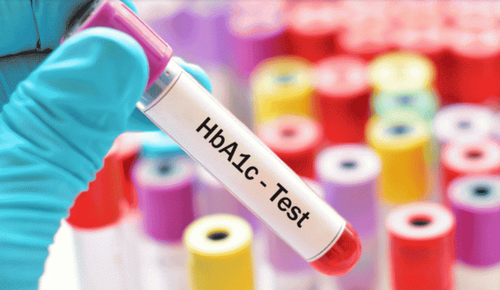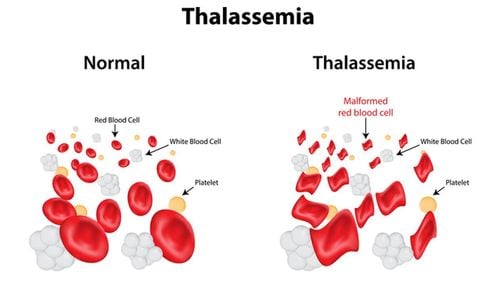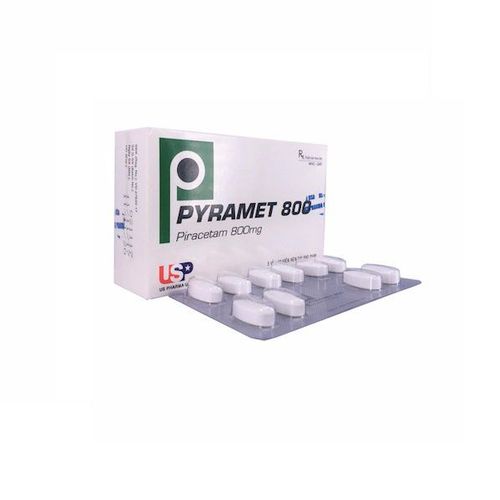This is an automatically translated article.
The article was professionally consulted with Master, Doctor Pham Thi Thuy Nhung - Deputy Head of Laboratory Department - Laboratory Department - Vinmec Hai Phong International General Hospital.The basis of the hemoglobin electrophoresis assay is the examination of dissolved or dispersed charged molecules in the electrolyte that is being passed through. After performing the hemoglobin electrophoresis test, the hemoglobin types will be separated. From there, it can help determine what type of hemoglobin it is and what percentage it makes up in the blood sample.
1. Hemoglobin Electrophoresis What is Hemoglobin?
Hemoglobin, also known as hemoglobin, is a complex protein containing Fe ++, hemoglobin has the main task of transporting O2 from the lungs to the tissues and transporting CO2 from the tissues to the lungs. Hemoglobin is in red blood cells and it makes up 33% of the weight of red blood cells, this is a macromolecule consisting of two components, hemoglobin and globin. Here are some of the most common types of hemoglobin found in the blood:Hemoglobin A: This is the most common type of hemoglobin found in the blood of an adult. If the amount of hemoglobin A is abnormally low, the patient may have Thalassemia syndrome (congenital hemolytic syndrome). Hemoglobin A2: This is found in small amounts in the adult body. Hemoglobin F: This is the type of fetal hemoglobin, found in the developing fetus and newborn. Until now, medicine has discovered many types of abnormal hemoglobin, these hemoglobin make up Hemoglobin S: This is a variant that causes sickle cell disease. Inherited disease on autosomal dominant chromosome, it will cause blockage of small blood vessels, from which the function of red blood cells is reduced, circulation and blood circulation is prevented. Hemoglobin E: Hemoglobin E occurs when glutamic acid at position 26 in the beta chain has been replaced by lyline. Hemoglobin C: This is the hemoglobin produced when the 6th beta chain glutamic acid is replaced by lylin. This type of hemoglobin often causes hemolytic anemia, because hemoglobin C's ability to circulate and carry oxygen is not as good as normal hemoglobin. Hemoglobin D: Hemoglobin D is common in people with sickle cell disease. Thalassemia: Thalassemia is a common genetic disease, caused by a partial decrease or loss of globin chain synthesis. Thalassemia is divided into two main types: Alpha-thalassemia and beta-thalassemia.
2. Hemoglobin Electrophoresis What is Hemoglobin?
Hemoglobin electrophoresis is a test that evaluates the composition as well as the percentage of hemoglobin present in the blood. Hemoglobin electrophoresis test is valuable in the diagnosis and screening of hemoglobinopathy.Electrophoresis is usually based on the principle that charged molecules dissolved or dispersed in an electrolyte will move when an electric current is passed. Anions move towards the anode, cations move towards the cathode, and uncharged molecules will not move. Thus, after electrophoresis, the different hemoglobin components in the blood sample will be separated, from which it is possible to identify and determine the percentage of that type of hemoglobin in the sample.
There are many methods to test hemoglobin hemoglobin electrophoresis such as: alkaline pH electrophoresis on cellulose acetate paper, agar gel electrophoresis in acidic pH medium, polyacrylamide gel electrophoresis, capillary electrophoresis, agarose gel electrophoresis...
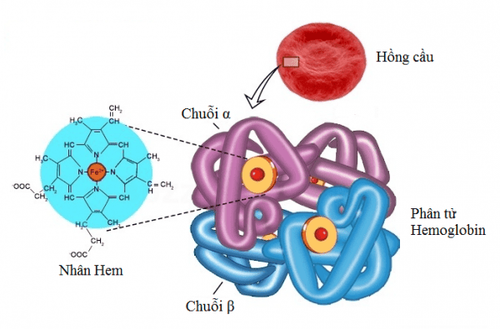
3. Indications for hemoglobin electrophoresis test
As already discussed, the basis of the hemoglobin electrophoresis assay is the examination of dissolved or dispersed charged molecules in the electrolyte that is being passed through. After performing the hemoglobin electrophoresis test, the hemoglobin types are separated. From there, it can help determine what type of hemoglobin it is and what percentage it makes up in the blood sample.Hemoglobin electrophoresis is indicated in the following cases:
Evaluation of unexplained hemolytic anemia. People with microcytic anemia not related to iron deficiency, chronic disease or lead poisoning. Hemoglobin electrophoresis test if there is a family history of hemoglobinopathy. Pre-marital hemoglobin electrophoresis test to prevent inherited diseases related to hemoglobin during childbirth. When abnormal red blood cells such as target-shaped, alkaline, or polychromatic red blood cells are suspected.
4. Procedure for performing hemoglobin electrophoresis test
Preparation before the hemoglobin electrophoresis test The hemoglobin electrophoresis test requires no special preparation. However, before having the test, tell your doctor if you have iron-deficiency anemia or are being treated for it. Iron deficiency anemia can cause hemoglobin A2 readings to be inaccurate. In addition, it is also important to inform the doctor if you have had a blood transfusion within the past 3 months, as this can also cause the test results to be erroneous.In addition, it should be noted that on the day of taking blood for hemoglobin electrophoresis test, you should wear a T-shirt with short sleeves so that the nurse can easily take a blood sample for testing.
Procedure for hemoglobin electrophoresis When performing a hemoglobin electrophoresis test, the nurse will disinfect the area on the arm or elbow with an antiseptic cotton swab or alcohol swab . Then, the nurse wraps an elastic band around the top of the patient's arm to prevent blood flow as well as cause blood to pool below and the veins will swell to help draw blood from the veins. is now easier.
The nurse inserts a needle to draw blood into the swollen vein. A blood collection tube will be attached to the other end of the needle. When enough blood has been collected for testing, the nurse will remove the needle. After that, a cotton bandage and a bandage will be applied to the injection site for the purpose of stopping bleeding.
What to do after a hemoglobin electrophoresis test After taking blood for testing, you need to bandage and apply gentle pressure on the area of the needle that draws the blood from the vein to stop the bleeding. You can return to normal activities after taking a blood sample for testing.
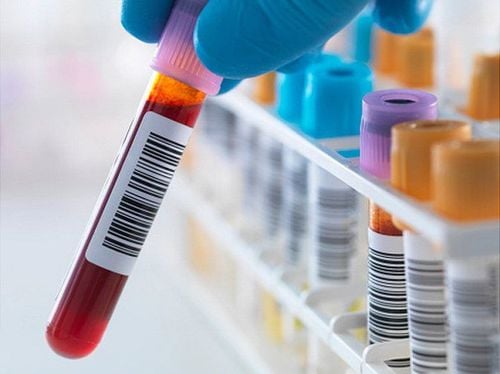
5. What do hemoglobin electrophoresis test results mean?
5.1. Hemoglobin electrophoresis test results are normal In infants and young children, hemoglobin levels are considered normal when:Hemoglobin F concentration (newborns): 50% – 80%; Hemoglobin F concentration (6 months old): 8%; Hemoglobin F concentration (more than 6 months of age): 1% - 2%. As for adults, the normal hemoglobin concentration is:
Hemoglobin A concentration: 95% - 98%; Hemoglobin A2: 2% – 3%; Hemoglobin F concentration: 0.8% - 2%; Hemoglobin S concentration: 0%; Concentration of hemoglobin C: 0%. 5.2. Abnormal hemoglobin electrophoresis test results If the test results show abnormal hemoglobin levels it may be due to:
A higher than normal hemoglobin concentration of both hemoglobin A2 and hemoglobin F may indicate a form of thalassemia light. Very low hemoglobin A levels and high hemoglobin F levels can be warning signs of a more severe form of thalassemia. Elevated hemoglobin F levels may indicate a rare condition that is hereditary persistence of fetal hemoglobin. Moderate amounts of Hemoglobin S may be indicative of sickle cell trait. High levels of Hemoglobin S can be a warning sign of sickle cell disease. High levels of hemoglobin C can be a warning sign of hemoglobin C disease, causing anemia and splenomegaly. Hemoglobin type S and Hemoglobin C levels mean hemoglobin S and C disease, which causes a mild or moderate form of sickle cell disease. Low levels of Hemoglobin E may be a marker of the presence of hemoglobin E. Hemoglobin E in high concentrations can indicate hemoglobin E disease, causing anemia and smaller-than-normal red blood cells often. The range of normal or abnormal test values may vary from one laboratory to another. For those who are planning to have a baby or find and suspect abnormal hemoglobin types in the blood, it is best to go to reputable hospitals to get the most accurate test results. Currently, the Department of Hematology - Vinmec International General Hospital is one of the leading prestigious addresses in the country, trusted by a large number of patients for medical examination and treatment. Thanks to the use of modern machines and equipment to check and analyze blood, it has provided accurate information on red blood cells, white blood cells, platelets, hemoglobin,... Overall assessment of the health status of the person being tested, early detection of the disease and suggestions for timely treatment. In particular, with a space designed according to 5-star hotel standards, Vinmec guarantees to bring patients the most comfort, friendliness and peace of mind when visiting and receiving treatment at the hospital.
Please dial HOTLINE for more information or register for an appointment HERE. Download MyVinmec app to make appointments faster and to manage your bookings easily.





